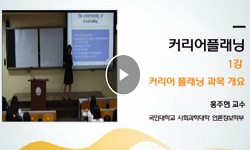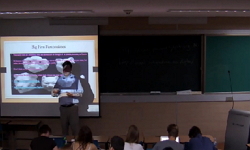Purpose: In the present study, we aimed to evaluate the suitability of the first screening examination for retinopathy of prematurity (ROP) in a tertiary neonatal intensive care unit (NICU). Methods: A retrospective analysis of ROP screening records o...
http://chineseinput.net/에서 pinyin(병음)방식으로 중국어를 변환할 수 있습니다.
변환된 중국어를 복사하여 사용하시면 됩니다.
- 中文 을 입력하시려면 zhongwen을 입력하시고 space를누르시면됩니다.
- 北京 을 입력하시려면 beijing을 입력하시고 space를 누르시면 됩니다.

미숙아 망막병증의 첫 선별 안저 검사의 적정 시기 = Optimal Timing of the First Screening Examination for Retinopathy of Prematurity
한글로보기https://www.riss.kr/link?id=A101598966
- 저자
- 발행기관
- 학술지명
- 권호사항
-
발행연도
2013
-
작성언어
Korean
- 주제어
-
등재정보
KCI등재후보
-
자료형태
학술저널
-
수록면
454-461(8쪽)
-
KCI 피인용횟수
2
- 제공처
- 소장기관
-
0
상세조회 -
0
다운로드
부가정보
다국어 초록 (Multilingual Abstract)
Purpose: In the present study, we aimed to evaluate the suitability of the first screening examination for retinopathy of prematurity (ROP) in a tertiary neonatal intensive care unit (NICU).
Methods: A retrospective analysis of ROP screening records of 459 infants admitted to the NICU of Seoul National University Children’s Hospital between January 2006 and December 2011 was performed. The first examination was performed at 31-32 weeks of postmenstrual age (PMA) or 4-5 weeks of postnatal age (PNA), whichever was earlier. The infants were divided into subgroups according to the gestational age (GA), and the time of the first examination, time of onset of ROP, and time of laser surgery were assessed with regard to the PMA and PNA.
Results: Of the 459 infants, 139 infants developed ROP, with the mean PMA at onset of ROP being 34+2±2+3 weeks. Type I ROP developed in 57 infants, with the median PMA at laser surgery being 36+0 weeks. The median PMAs at the time of onset and the time of surgery did not significantly differ between groups divided according to GA. Infants with a GA of <26 weeks showed a higher incidence of Type I ROP compared to those with a GA of ≥26 weeks. None of the infants with a GA of <26 weeks were diagnosed with ROP at the first examination, and none of the patients in either group missed treatment. Six infants developed ROP before 31 weeks of PMA, at which time the first screening for ROP is generally performed.
Conclusion: We suggest that the timing of the initial examination for ROP should be based on PMA or PNA, whichever is earlier, particularly in infants with GA of <26 weeks.
국문 초록 (Abstract)
목적: 본 연구자들은 미숙아 망막병증의 첫 안저 검진 시기의 적절성 여부를 확인하고자 하였다. 방법: 2006년 1월 1일부터 2011년 12월 31일까지 서울대학교병원에서 출생하여 신생아 중환자실...
목적: 본 연구자들은 미숙아 망막병증의 첫 안저 검진 시기의 적절성 여부를 확인하고자 하였다.
방법: 2006년 1월 1일부터 2011년 12월 31일까지 서울대학교병원에서 출생하여 신생아 중환자실에 입원한 재태주령 35주 미만의 조산아 중, 32주 미만 혹은 출생체중 2 kg 미만의 환자를 대상으로 출생 후 4-5주 또는 재태주령 31-33주중 빠른 시기에 선별 검사를 시행한 환자 259명의 의무 기록을 후향적으로 분석하였다. 재태주령 별 발병과 수술시기를 월경 후 주령과 역연령으로 조사하였고, 첫 검진부터 발병과 수술까지의 기간을 조사하였다.
결과: 총 459명의 미숙아 중 139명(30.3%)에서 미숙아 망막병증이 발병하였으며, 이중 레이저 광응고술 치료를 시행한경우는 57명(12.4%)이었다. 미숙아 망막병증의 평균 발병 시기는 월경 후 주령 34+2±2+3였으며, 수술을 시행한 시기의 중간값은 월경 후 주령 36+0주(32+1-43+0주)로 환자군의 재태주령과 무관하였다. 본 연구의 선별 검사 방법으로 재태주령 26주 미만에서는 첫 검진 당시 진단된 경우는 없었고, 모든 경우에서 치료 시기를 놓치지 않았다.
첫 안저 검진부터 수술까지의 최소 기간은 17일 이었다. 재태주령 26주 미만에서 Type I ROP의 발병률은 47%로,월경 후 주령 31주 이전에 Type I 미숙아 망막병증이 발병한 경우는 4명이 있었다.
결론: 재태주령 26주 미만의 경우, Type I 미숙아 망막병증의 빈도가 높아 월경 후 주령 31주와 출생 후 4-5주 중 빠른시기를 기준하여 선별 검사를 시작하는 것이 적절한 것으로 생각된다.
참고문헌 (Reference)
1 Wilkinson AR, "UK retinopathy of prematurity guideline" 84 : 71-74, 2008
2 Kim NY, "The optimal time for retinopathy of prematurity (ROP) screening and preventable risk factors related to the progression of threshold ROP" 12 : 49-56, 2005
3 Good WV, "The incidence and course of retinopathy of prematurity: findings from the early treatment for retinopathy of prematurity study" 116 : 15-23, 2005
4 International Committee for the Classification of Retinopathy of Prematurity, "The International Clssification of Retinopathy of Prematurity revisited" 123 : 991-999, 2005
5 Subhani M, "Screening guidelines for retinopathy of prematurity: the need for revision in extremely low birth weight infants" 107 : 656-659, 2001
6 Hwang WK, "Screening for retinopathy of prematurity: optimal timing of first examination" 7 : 161-170, 2000
7 Austeng D, "Screening for retinopathy of prematurity in infants born before 27 weeks' gestation in Sweden" 129 : 167-172, 2011
8 Fierson WM, "Screening examination of premature infants for retinopathy of prematurity" 131 : 189-195, 2013
9 Section on Ophthalmology American Academy of Pediatrics, "Screening examination of premature infants for retinopathy of prematurity" 117 : 572-576, 2006
10 Early Treatment For Retinopathy Of Prematurity Cooperative Group, "Revised indications for the treatment of retinopathy of prematurity: results of the early treatment for retinopathy of prematurity randomized trial" 121 : 1684-1694, 2003
1 Wilkinson AR, "UK retinopathy of prematurity guideline" 84 : 71-74, 2008
2 Kim NY, "The optimal time for retinopathy of prematurity (ROP) screening and preventable risk factors related to the progression of threshold ROP" 12 : 49-56, 2005
3 Good WV, "The incidence and course of retinopathy of prematurity: findings from the early treatment for retinopathy of prematurity study" 116 : 15-23, 2005
4 International Committee for the Classification of Retinopathy of Prematurity, "The International Clssification of Retinopathy of Prematurity revisited" 123 : 991-999, 2005
5 Subhani M, "Screening guidelines for retinopathy of prematurity: the need for revision in extremely low birth weight infants" 107 : 656-659, 2001
6 Hwang WK, "Screening for retinopathy of prematurity: optimal timing of first examination" 7 : 161-170, 2000
7 Austeng D, "Screening for retinopathy of prematurity in infants born before 27 weeks' gestation in Sweden" 129 : 167-172, 2011
8 Fierson WM, "Screening examination of premature infants for retinopathy of prematurity" 131 : 189-195, 2013
9 Section on Ophthalmology American Academy of Pediatrics, "Screening examination of premature infants for retinopathy of prematurity" 117 : 572-576, 2006
10 Early Treatment For Retinopathy Of Prematurity Cooperative Group, "Revised indications for the treatment of retinopathy of prematurity: results of the early treatment for retinopathy of prematurity randomized trial" 121 : 1684-1694, 2003
11 공민귀, "Retinopathy of Prematurity in Infants Born before 25 Weeks Gestation in a Korean Single Neonatal Intensive Care Unit: Incidence, Natural History and Risk Factors" 대한의학회 27 (27): 1556-1562, 2012
12 Mitchell AJ, "Physiologic effects of retinopathy of prematurity screening examinations" 11 : 291-297, 2011
13 Dhaliwal CA, "Pain in neonates during screening for retinopathy of prematurity using binocular indirect ophthalmoscopy and wide-field digital retinal imaging: a randomised comparison" 95 : F146-F148, 2010
14 Kishore K, "Need for revised screening protocol for early detection of retinopathy of prematurity in infants born before 25 weeks" 131 : 546-547, 2013
15 Walsh MC, "Necrotizing enterocolitis: treatment based on staging criteria" 33 : 179-201, 1986
16 Bonthala S, "Mydriatics slow gastric emptying in preterm infants" 137 : 327-330, 2000
17 Papile LA, "Incidence and evolution of subependymal and intraventricular hemorrhage: a study of infants with birth weights less than 1,500 gm" 92 : 529-534, 1978
18 Good WV, "Final results of the early treatment for retinopathy of prematurity (ETROP) randomized trial" 102 : 233-248, 2004
19 Reynolds JD, "Evidence-based screening criteria for retinopathy of prematurity: natural history data from the CRYOROP and LIGHT-ROP studies" 120 : 1470-1476, 2002
20 Gilbert C, "Characteristics of infants with severe retinopathy of prematurity in countries with low, moderate, and high levels of development: imlications for screening programs" 115 : e518-e525, 2005
동일학술지(권/호) 다른 논문
-
- 대한신생아학회
- 조은현
- 2013
- KCI등재후보
-
신생아에서 채혈 시 음악제공이 통증행동 반응에 미치는 효과
- 대한신생아학회
- 오혜린
- 2013
- KCI등재후보
-
Efficacy of Erythromycin and Metoclopramide in Neonates with Feeding Intolerance
- 대한신생아학회
- 서경아
- 2013
- KCI등재후보
-
Ureaplasma Urealyticum의 산모의 질 내 집락 및 미숙아 호흡기 집락이 임상 양상에 미치는 영향
- 대한신생아학회
- 신재영
- 2013
- KCI등재후보
분석정보
인용정보 인용지수 설명보기
학술지 이력
| 연월일 | 이력구분 | 이력상세 | 등재구분 |
|---|---|---|---|
| 2027 | 평가예정 | 재인증평가 신청대상 (재인증) | |
| 2021-01-01 | 평가 | 등재학술지 유지 (재인증) |  |
| 2018-01-01 | 평가 | 등재학술지 유지 (등재유지) |  |
| 2015-01-01 | 평가 | 등재학술지 선정 (계속평가) |  |
| 2013-07-31 | 학술지명변경 | 한글명 : 대한신생아학회지 -> Neonatal medicine외국어명 : Journal of the Korean Society of Neonatology -> Neonatal medicine |  |
| 2013-01-01 | 평가 | 등재후보 1차 PASS (등재후보1차) |  |
| 2012-01-01 | 평가 | 등재후보학술지 유지 (기타) |  |
| 2011-01-01 | 평가 | 등재후보 1차 PASS (등재후보1차) |  |
| 2009-01-01 | 평가 | 등재후보학술지 선정 (신규평가) |  |
학술지 인용정보
| 기준연도 | WOS-KCI 통합IF(2년) | KCIF(2년) | KCIF(3년) |
|---|---|---|---|
| 2016 | 0.15 | 0.15 | 0.26 |
| KCIF(4년) | KCIF(5년) | 중심성지수(3년) | 즉시성지수 |
| 0.23 | 0.2 | 0.563 | 0 |




 KCI
KCI




